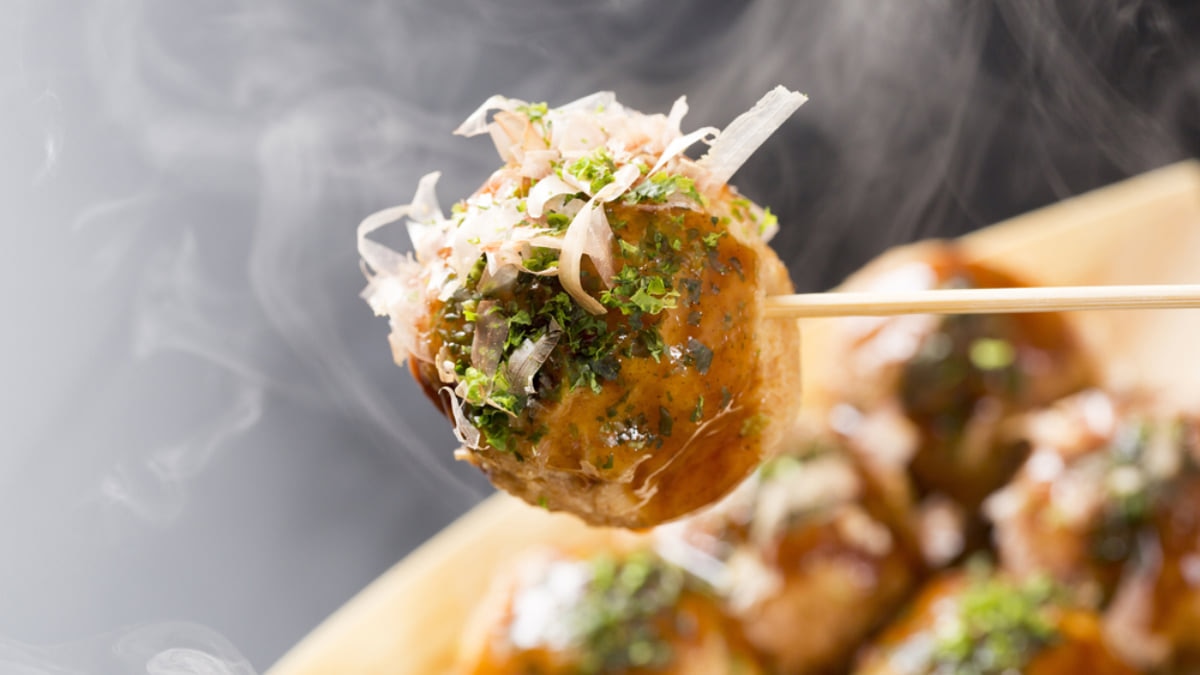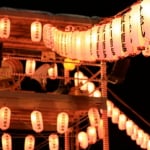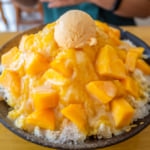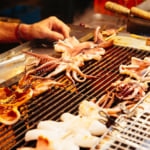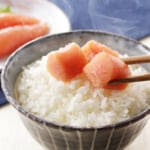Photo by HikoPhotography/Shutterstock
The 10 Street Foods You Have to Try in Tokyo
Although Tokyo is praised for its elevated cuisines and award-winning restaurants, the city's street food scene is just as delicious. Many street foods found at traditional festivals and fireworks displays are not available outside of these festive occasions, while others are such beloved classics you can even find them at the grocery store. So even if your trip doesn't coincide with one of the city's many festivals, there's no reason you can't enjoy at least a few of Tokyo's top street foods.
table of contents
[x] close
The 10 Street Foods You Have to Try in Tokyo
Dango (Rice Dumplings)
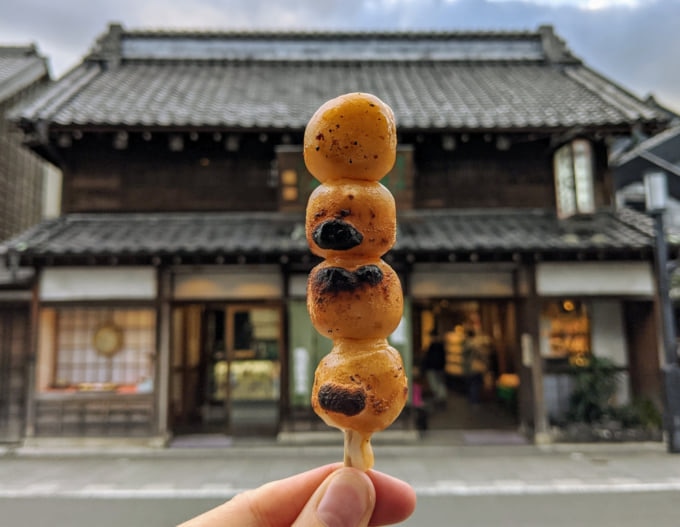
Photo by Makiato Studio/Shutterstock
Dango are skewered dumplings made from rice flour dough, and are one of Japan's oldest and most traditional street foods. They can be savory or sweet, and there are many regional and seasonal variations. Some of the most popular are mitarashi dango, which are topped with a sweet and salty glaze, hanami dango, the tri-colored dango most common during springtime, and yaki-dango, charcoal-grilled dumplings which are a specialty of Tokyo's mountainous regions like Takao and Ome.
Taiyaki (Stuffed Pancakes)
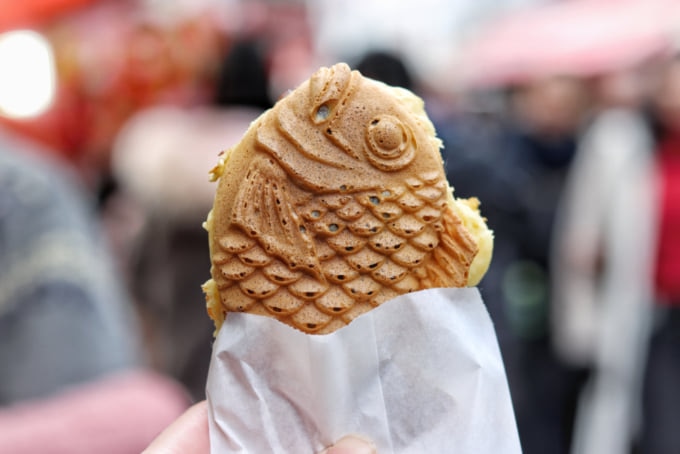
Photo by KarimahBH/Shutterstock
Taiyaki are pancakes shaped like fish, specifically 'tai' (sea bream), and stuffed with sweet or savory fillings. The pancakes were traditionally made with a rice flour batter, but these days wheat flour is also common. The most common fillings are anko (red bean paste) and custard, but there are also taiyaki filled with chocolate, mochi or savory ingredients like ham, eggs and cheese. Versatile and delicious, taiyaki are the perfect snack for on the go.
Ikayaki (Grilled Squid)
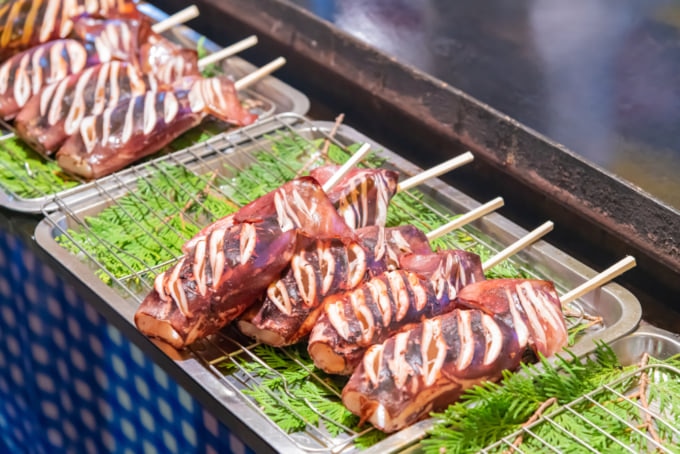
Photo by Princess_Anmitsu/Shutterstock
Ikayaki are grilled and skewered squid, and are a common sight at festivals and fireworks displays. These savory snacks are typically served still warm with a salty glaze. Depending on the size of the squid, ikayaki can include the whole squid, half or just the tentacles. Squid season is at its peak during the hot weather, and so ikayaki are associated with summer and early autumn festivals. Aside from these festival yatai (food stalls), skewered ikayaki are rare, making them a highly sought after treat during these special occasions.
Yakitori (Skewers)
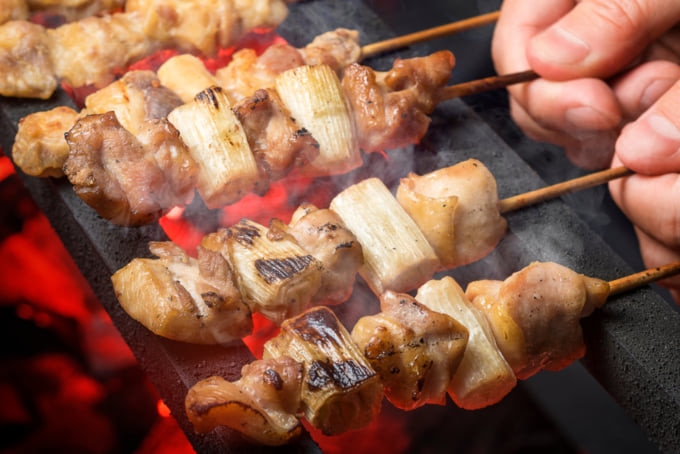
Photo by kai keisuke/Shutterstock
Yakitori literally mean 'grilled chicken', and although there are other terms specifically for grilled pork (yakiton) and grilled beef (yakigyu), 'yakitori' is often used as an umbrella term for any skewered meat. In Tokyo, there are hundreds if not thousands of restaurants and food stands specializing in yakitori, and they are also sold at grocery stores, convenience stores and festival stalls. Cheap, tasty and widely available, yakitori are the ideal Tokyo street food.
Takoyaki (Octopus Balls)
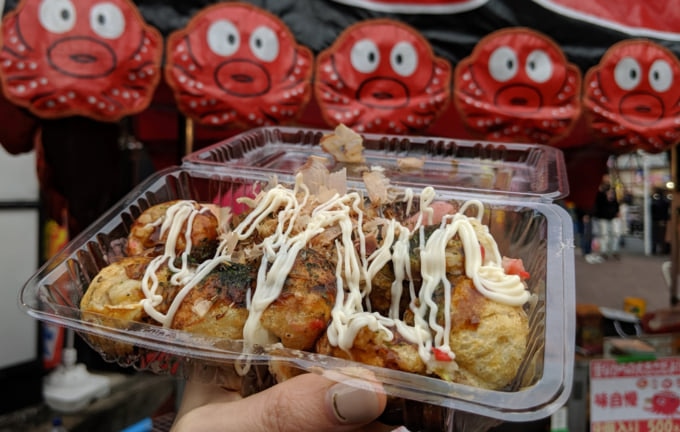
Photo by Makiato Studio/Shutterstock
Takoyaki are savory street food from Osaka that are now popular all over Japan. They are made by cooking a savory batter and octopus pieces in circular griddles, flipping halfway through cooking to give the signature spherical shape. Takoyaki are typically topped with dried bonito flakes, a savory soy sauce glaze and drizzle of mayonnaise. Takoyaki are common not just at festivals but at specialty restaurants and takeout food stands around Tokyo.
Watame (Cotton Candy)
Formerly a sweet treat marketed to children, cotton candy has a growing fan base of teens and young adults who appreciate its nostalgic value. Cotton candy or 'watame' can be found as a street food in trendy, youthful areas like Harajuku as well as festival stalls.
Yaki-imo (Roasted Sweet Potato)

Photo by K321/Shutterstock
Yaki-imo are made by slow-roasting sweet potatoes called satsuma-imo over a long period of time. This converts the natural starches to sugars, making an intensely sweet but good-for-you soul food. Sweet potatoes were introduced to Japan during the Middle Ages and have been a staple crop ever since. Yaki-imo are sold all year round, but are most popular during the colder months of late fall and winter.
Baby Castella Cakes
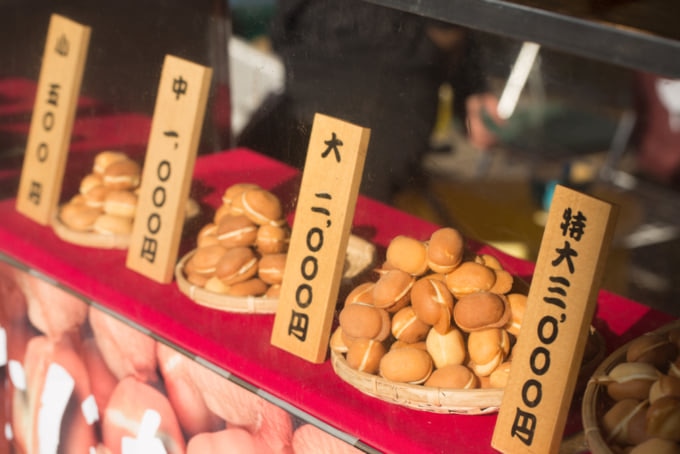
Photo by Sann von Mai/Shutterstock
One of the most popular snacks at festivals in Japan, there's always sure to be a lineup at the stall selling 'baby castella' (kasutera). Baby castella are a miniature version of the Japanese 'castella' sponge cake, though baby castella are cooked on a griddle like a pancake rather than in a conventional oven. Castella are believed to be based on Portuguese desserts brought over during the sixteenth century, but the origin of the word 'castella' is unknown. Baby castella are more suited to eating on the go than traditional castella cakes because of their small size. They are often baked into the shapes of popular characters on custom griddles, further boosting their popularity.
Fruits-Ame (Candied Fruits)
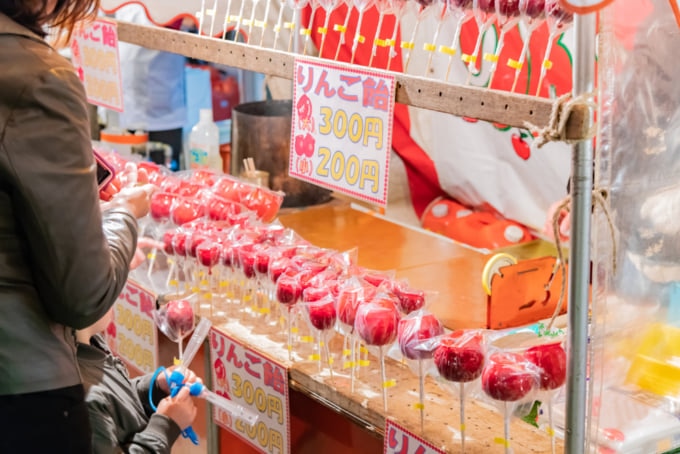
Photo by Princess_Anmitsu/Shutterstock
A variety of skewered fruits and vegetables are a popular street snack in Japan, including salted cucumbers, fresh pineapple, chocolate-dipped bananas or the more traditional 'fruits ame', or candied fruits. Candied fruits are common at festivals, especially during the summer. Popular varieties include candied grapes, strawberries and miniature apples.
Crepes
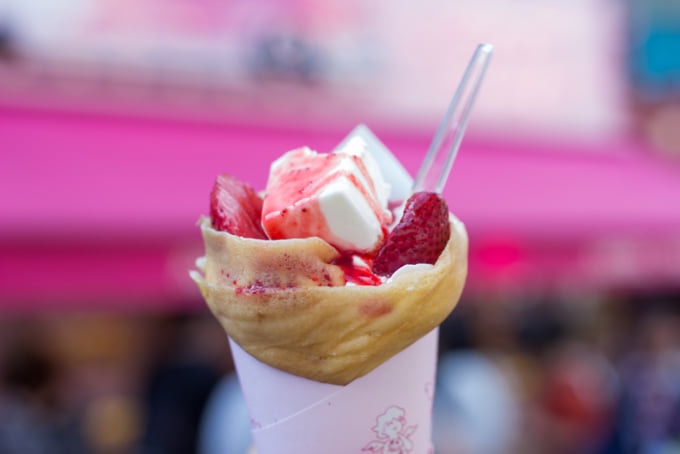
Photo by MIKO.K/Shutterstock
Crepes are a well known specialty of the Tokyo street food scene, ever since the first crepe shop opened up in Harajuku in 1977. Unlike traditional French crepes, Japanese crepes are typically rolled up like an ice cream cone and eaten as a street food. They are usually filled with sweet ingredients like fresh fruit and custard, whipped cream or ice cream.
In Conclusion
Tokyo's street food is essential for eating while visiting the city. From traditional recipes dating back hundreds of years to modern classics inspired by international cuisine, these are not just snacks to enjoy on the go, but a peak into the culinary traditions and local flavors that continue to influence and inspire today's recipes.





